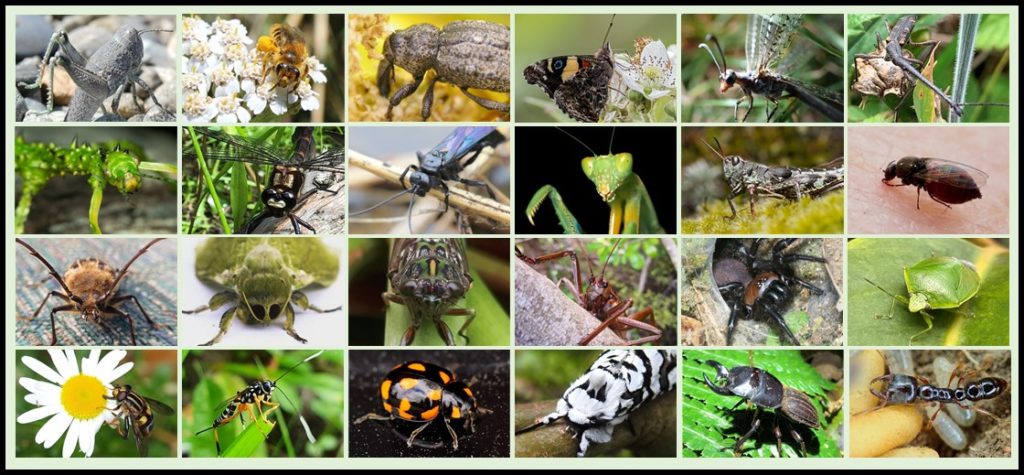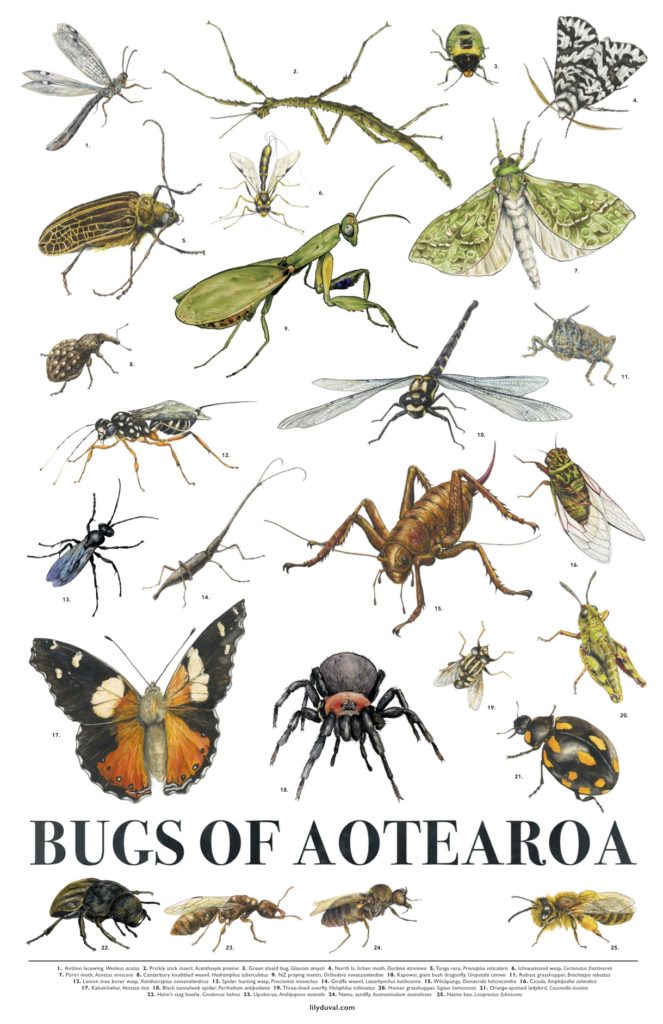Birds tend to hog the spotlight here in Aotearoa New Zealand but did you know we also have a host of incredible insects, spiders and other invertebrates?

To celebrate this colourful cast of critters, The Entomological Society of New Zealand has launched Bug of the Year. Starting on 14 November and running for 3 months, the competition pits 24 nominees against each other to battle it out for the prestigious title of Bug of the Year 2023.
What’s so great about bugs?

Insects, spiders, slugs and snails are vital for a healthy planet. They process our waste, churn our soils, pollinate our crops, filter our water, and provide food for birds, lizards, and each other. Around three-quarters of the food crops we rely on are pollinated by insects and other critters – without them we’d have no coffee, tomatoes, chocolate or cotton.
Aotearoa is home to 250 bird species but there are more than 20,000 species of insects, 2500 species of spider, and 1400 species of slugs and snails. Just like our quirky birds, many of these bugs are flightless, dull-coloured for camouflage, and freeze when they feel threatened. These characteristics help them escape birds who hunt by sight from above but they’re less useful against sniffing and climbing mammals like rats and stoats. Many bugs are also vulnerable to habitat loss, climate change and pesticides.
One of our most iconic insects, the wētāpunga (giant wētā), used to roam forests on the mainland but is now confined to predator free offshore islands. Despite their fearsome appearance, giant wētā are harmless vegetarians – when rats arrived, these big, defenceless insects made easy snacks.
Like the wētāpunga, lots of our unique critters are in trouble – there are more than 1000 invertebrates on New Zealand’s threatened species list.
A who’s who of Aotearoa’s bugs

This year’s inaugural Bug of the Year nominees shows off the diversity of this country’s many-legged fauna.
You’ll find the charming and charismatic wētāpunga and the pepetuna (Pūriri moth) as well as the kahukōwhai (Yellow admiral butterfly) and the black tunnel web spider.
But you’ll also find rare and cryptic species like the robust grasshopper and the Canterbury knobbled weevil.
Each bug has provided a glamorous selfie and written a short bio about its life. Bug of the Year also has its very own iNaturalist page where you can check out all the observations for the nominees and log your own.
If you’ve ever voted in Forest & Bird’s famous Bird of the Year competition, you’ll be familiar with the format.
Voting is simple – peruse the list of nominees and cast your votes. Everyone gets three equal (unranked) votes. You can champion a species you know and love or get to know a new bug!
The winner will be announced on 14 February 2023.
Bug of the Year is here to stay
All candidates this time are insects – except for one spider – but the team hope people will nominate slugs, snails, springtails and all sorts of different bugs for 2024’s competition.
The NZ Entomological Society hopes that Bug of the Year will get people excited about all the weird and wonderful invertebrates in their backyard and beyond.
They also hope the competition will raise awareness about the importance of bugs – they are fascinating and beautiful and vital for a healthy planet.
Spread the word!
You can free download the official Bug of the Year poster and brochure to print and put up in your school, work or neighbourhood. Keep your eyes peeled for events happening in your area in the coming months.
Download a free colouring-in page of your favourite nominees or support next year’s competition by purchasing a poster of this year’s bugs by Lyttelton artist Lily Duval.
Who will be Bug of the Year 2023? Have your say now.

